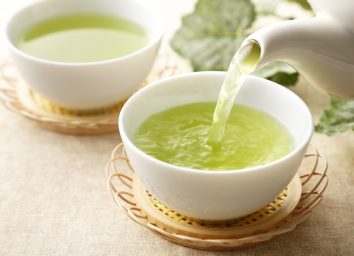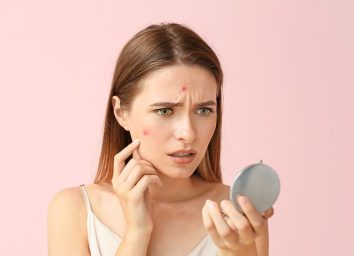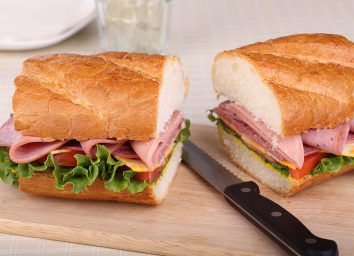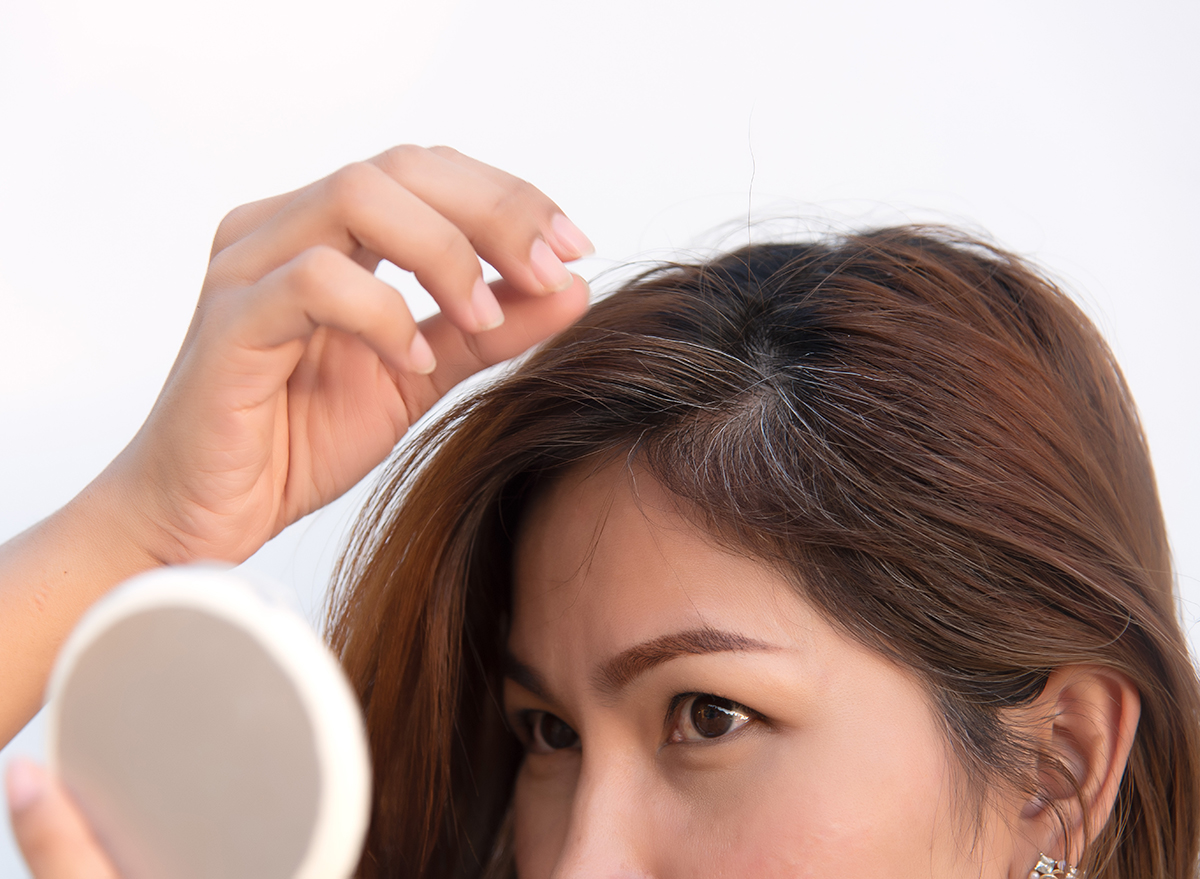
There really is nothing more frustrating than uncovering one strand of gray hair that seems to have suddenly appeared on your head. It's like that uninvited party guest who just doesn't seem to get the hint! Gray and white hair is, in fact, a lack of pigmentation and melanin. In effect, gray or white hair is actually clear hair and only appears gray because of the way that light is refracted from it. So now you know that!
But going gray can still make you seem older than you feel. Before you get too bent out of shape, though, there is a silver lining. Although gray hair can be the consequence of age, genetics, and stress, vitamins, and minerals you're not getting enough of can hasten graying. Add these foods to your diet, and you could help stall the process. And to make sure you're really keeping up with your healthy-eating goals, try out these 21 Best Healthy Cooking Hacks of All Time.
Liver
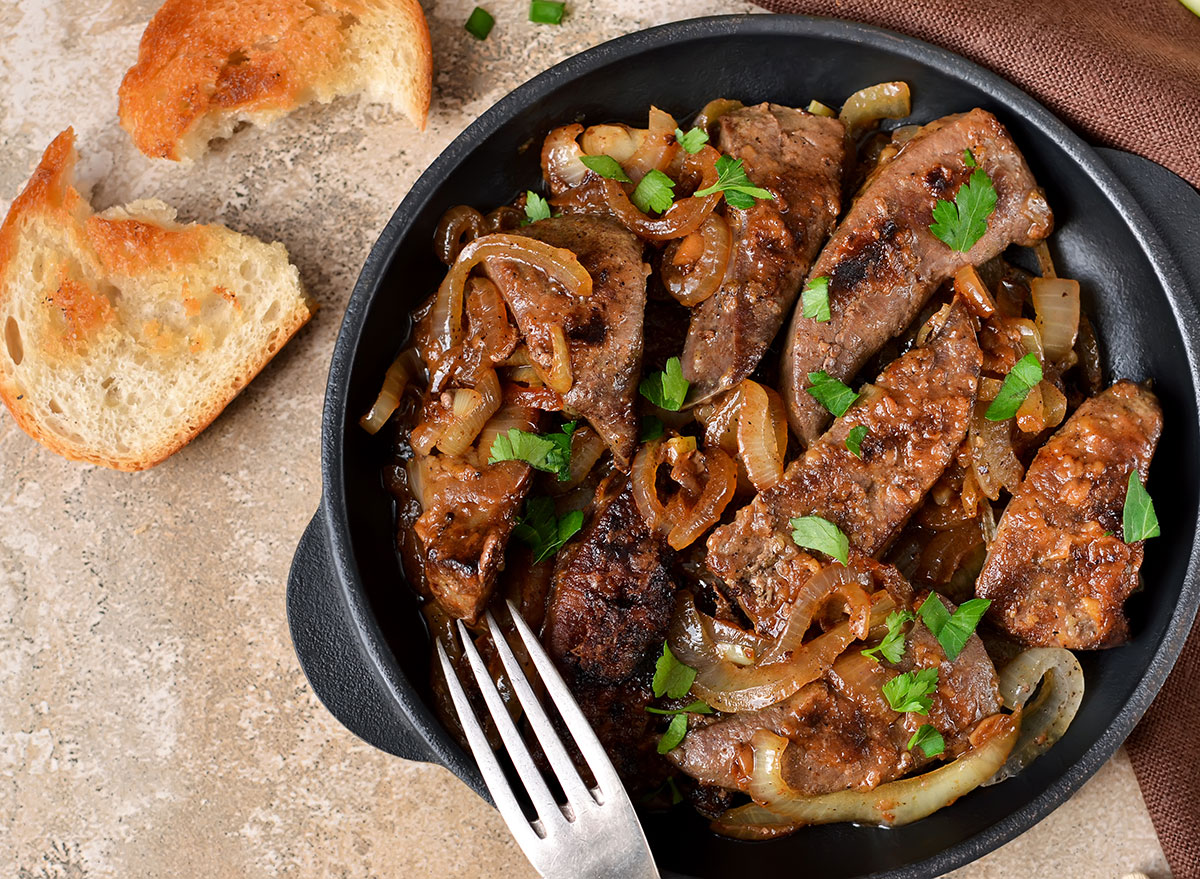
Liver has an abundance of the nutrients that will prevent you from looking like a president nearing the end of his second term in office. Four ounces of beef liver contains a whopping 95.48 micrograms of vitamin B12, a lack of which (also known as pernicious anemia) is associated with early graying. (The recommended daily allowance is 2.4 micrograms for most adults.) As you get older, your ability to absorb vitamin B12 from food decreases. So people older than 50 should eat plenty of foods that contain lots of it. Liver is your one-stop-shop.
Liver is also rich in copper, a deficiency of which can increase the chances of premature graying, according to a study published in Biological Trace Element Research. You can get all the copper and iron you'll need by eating one 4 oz serving of either lamb, beef or veal liver. Beef liver is also a great source of vitamin B9, also called folate or folic acid; low levels have been associated with melanin deficiency. One 4 oz serving contains around 80% of the RDA.
Chickpeas
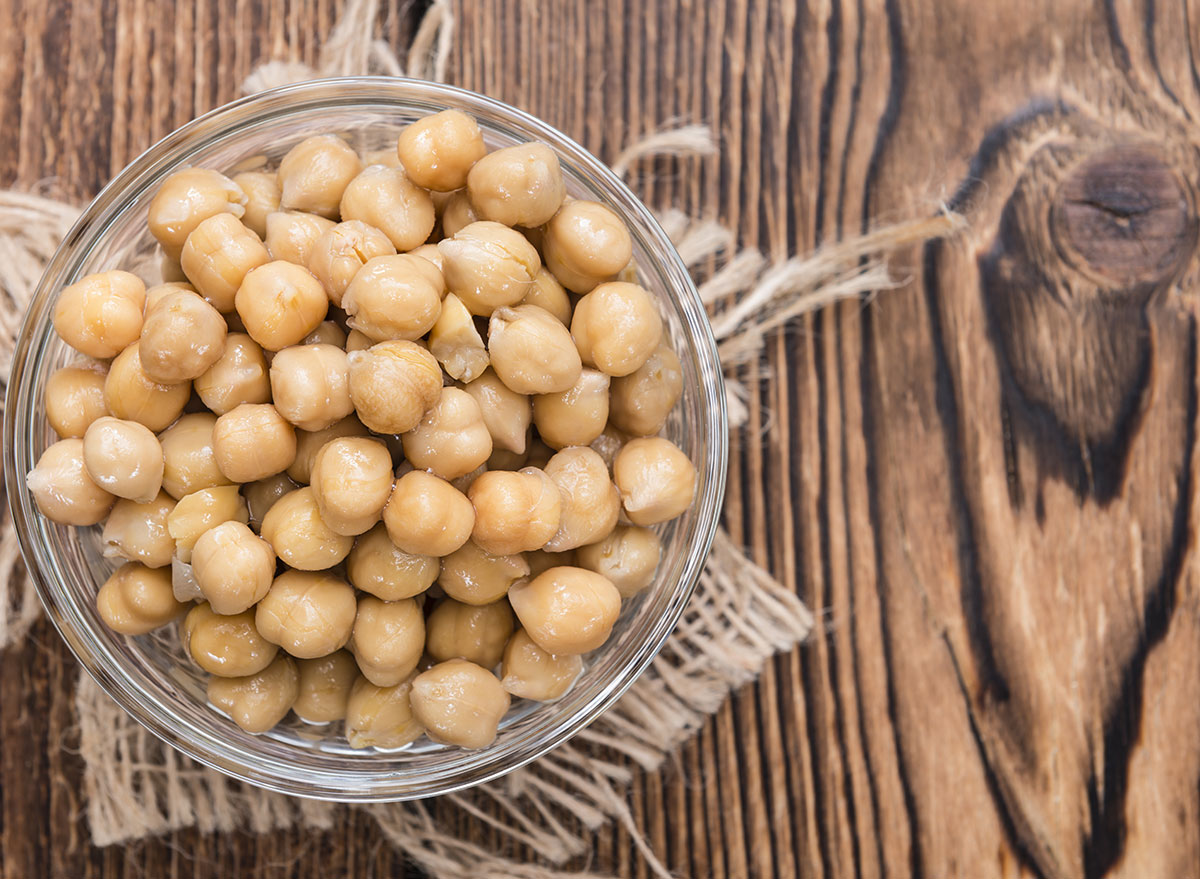
Chickpeas contain some of the highest concentrations of vitamin B9. A cup of them packs a whopping 1,114 micrograms of B-9, nearly three times the RDA of 400 micrograms.
Chicken
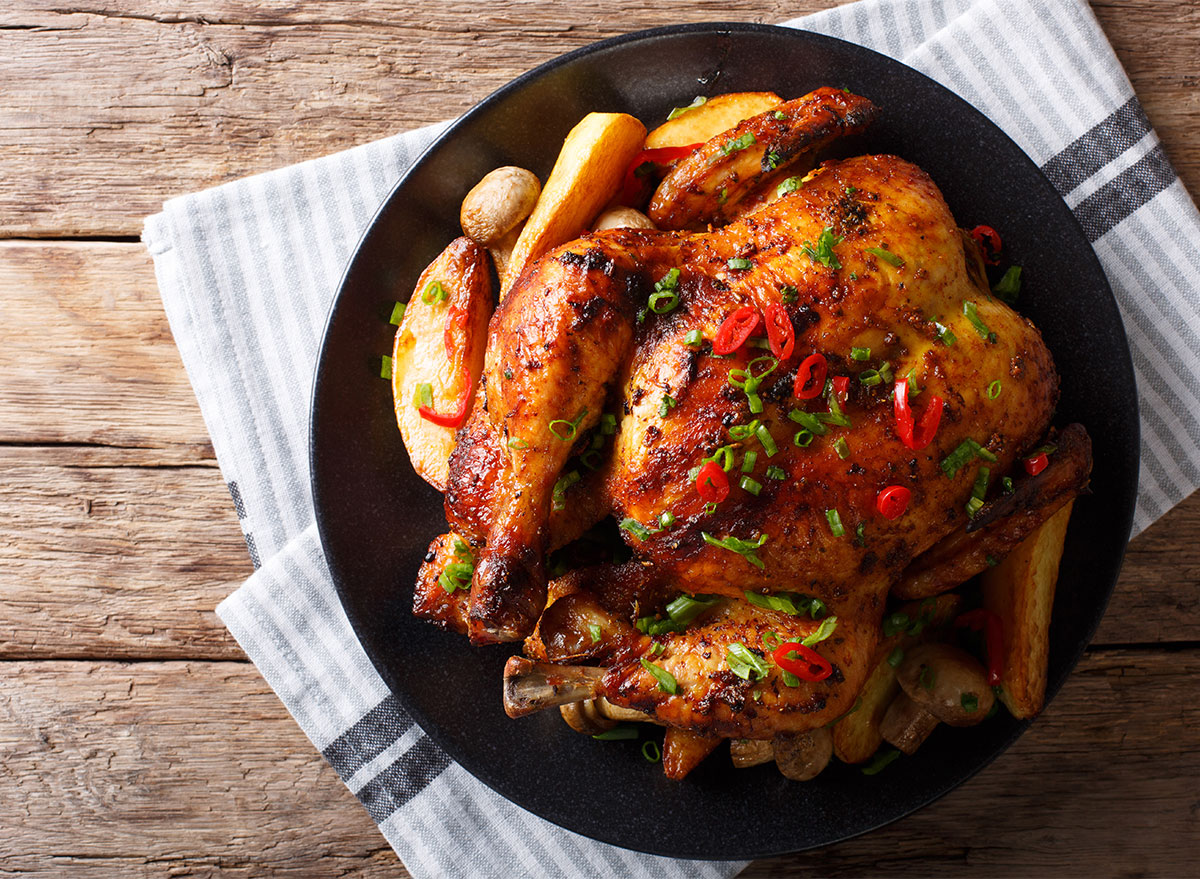
Low levels of vitamin B12 can lead to fatigue, shortness of breath, and yes, dry, thinning, and prematurely gray hair. You can keep your B12 levels topped up by consuming lots of eggs, cheese, milk, and chicken. "We know that stress uses up vitamin B, and some studies have shown that taking large doses of certain B vitamins (B6, B12, folic acid) have begun to reverse the process of graying in three months," says trichologist Sara Allison. "The hairs revert to white when the vitamins are stopped."
Lentils

Lentils are also a great source of B9. As with vitamin B12, B9 helps with the production of DNA and RNA. It's also necessary for red blood cell production and plays a vital role in the production of methionine, an amino acid important for retaining hair color.
Spirulina

Although the highest concentrations of copper are found in the livers of various animals, the highest amount of non-animal-derived copper can be found in spirulina. It's nicer sounding than "pond scum," but that essentially is what it is: A type of blue-green algae that grows naturally in oceans and salty lakes in subtropical climates.
Marmite
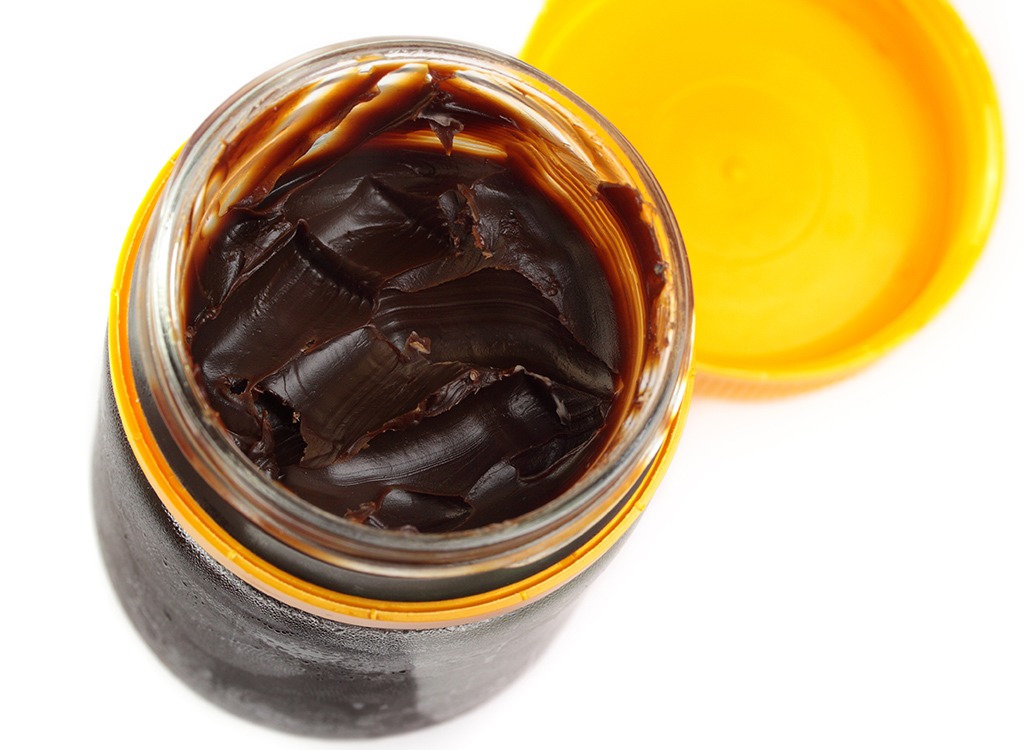
This yeast-extract spread looks like tar and has a unique and powerful odor all its own. (And it's just about as divisive as liver.) Even its British manufacturers admit that Marmite — typically spread on hot buttered toast at breakfast—is an acquired taste. But if want to fend off the grays, you may want to give it a try. According to the USDA, yeast extract tops all foods in folic acid content. One small schmear of Marmite (about 4 grams) packs a whopping 100 micrograms of folic acid, or 25% of your recommended daily allowance.
